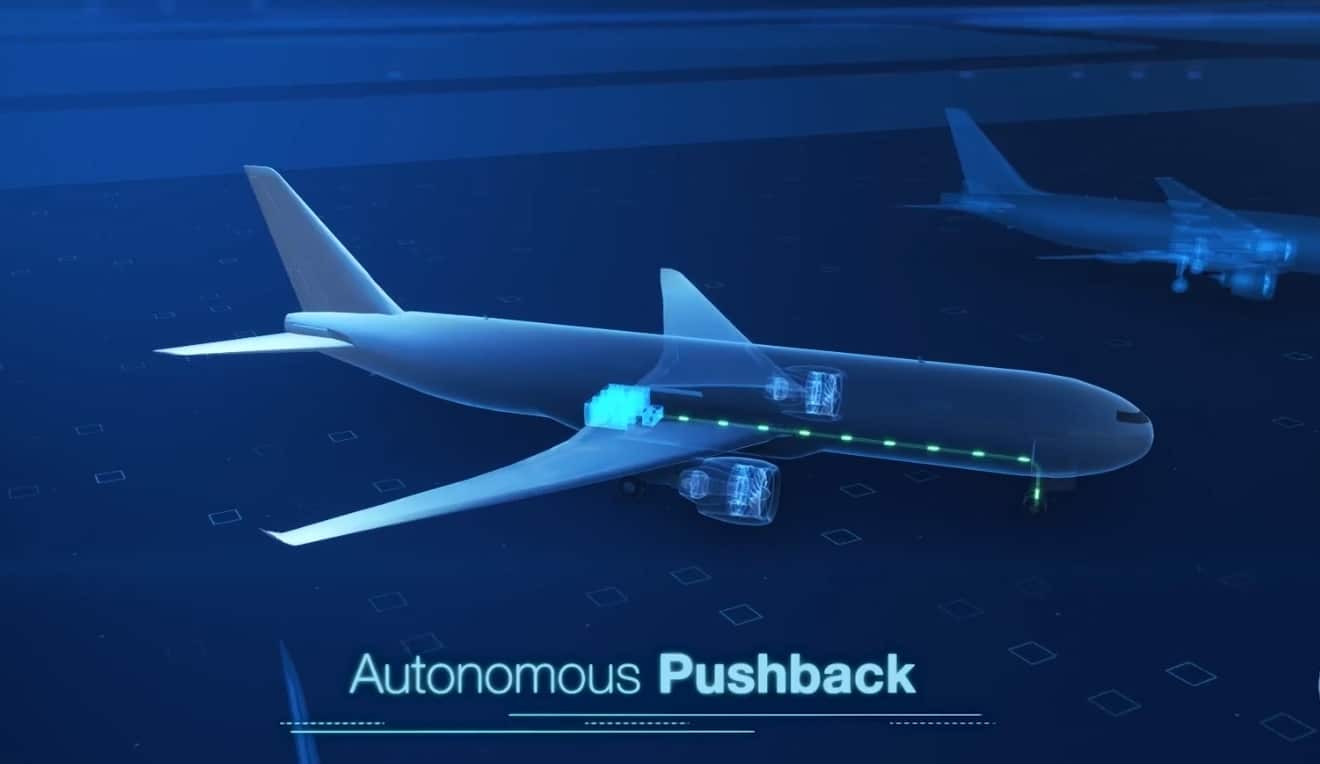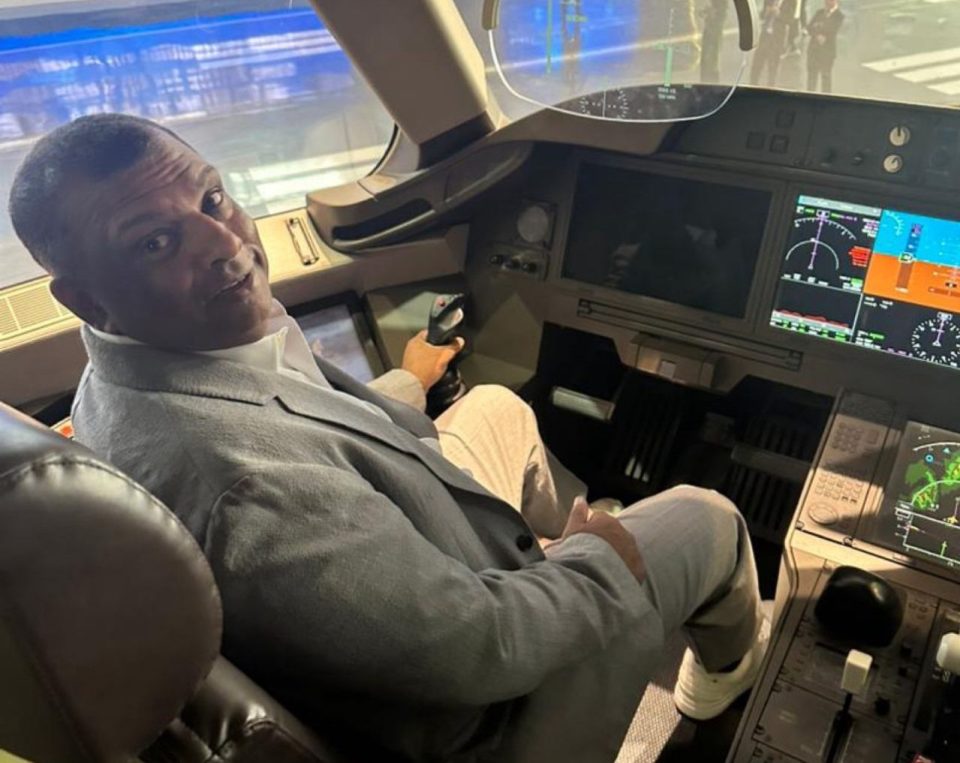Aerospace
Airbus to Introduce autonomous pushback for Future Hybrid aircraft.

Pushback is crucial for the aircraft since it enables them to reverse. since airplane lacks external power to accomplish it. But, Airbus might stop needing the pushback trucks to perform that function in the future.
The nose gear motor, which will boost the electrical power to do so, will enable one of the future Airbus aircraft, which is powered by a hybrid electric, to pushback itself without the assistance of a pushback vehicle. As soon as the last aircraft has finished pushing back, the same electric energy fuels the turbines, which then run the propeller and generate enough thrust to move the aircraft forward.
At Airbus, hybrid electric power can cut CO2 emissions from airplanes by up to 5%. Although they are often lighter than fixed-wing aircraft, helicopters could account for as much as 10% of the total. Airbus is leading a cross-industry effort to make hybridization a reality because it represents a significant milestone in the aircraft industry’s decarbonization path.
A variety of innovative solutions that combine novel fuel types and emerging technologies are needed to decarbonize flight. Hybrid-electric propulsion is one such option that can increase the energy efficiency of all aircraft classes.
A single mechanical power source powers the propeller or fan in a serial architecture. Several sources of power exist besides batteries. Alternatives exist, such as hydrogen fuel cells. In any instance, dispersed propulsion is made possible by the propeller being always driven by an electric motor.
This #WorldEngineeringDay, we’re celebrating ? the work of our talented #TeamAirbus engineers who are preparing the future of aviation by developing, testing and maturing #hybridisation. Watch the video below to find out more ?.
? https://t.co/lNpyKuiAge pic.twitter.com/yBTZwD14le— Airbus (@Airbus) March 4, 2023
As far as hybridization is concerned, this is serial architecture’s biggest advantage. But it means adding weight in the shape of a generator, to convert mechanical power to electrical power.
In a parallel architecture, the gas turbine sometimes operates below peak efficiency. However, a smaller and lighter electric motor is enough to meet the requirements. So a parallel architecture is better suited to hybrid applications. What about the battery that powers the electric motor sitting within it?
Airbus Charging options
Whatever the technology, batteries need to be charged. For commercial aviation there are three options: swapping depleted units for new ones on the ground; or installing charge points at the gate, potentially using renewable energy. The latter requires investment in infrastructure but in the long term, this would be offset by fuel savings.
Thirdly, where ground infrastructure is lacking, the aircraft’s engines could recharge the batteries during the cruise phase of a flight. “The reality could well be a mix of all three,” says Segura, “depending on individual airline and airport choices.”
Read more: Click

Aerospace
India is set to build a central command for the Air Traffic Control system, called ISHAN

India’s air traffic growth has led to increased responsibilities for air traffic control. The Airports Authority of India (AAI) is considering centralizing air traffic control for aircraft, dividing the country into four regions. The goal is to consolidate India’s segmented airspace into a single entity to improve air traffic management (ATM) efficiency, safety, and smoothness.
Recently, the AAI invited expressions of interest to develop a detailed project report for the Indian Single Sky Harmonized Air Traffic Management (ISHAN) initiative in Nagpur. Under this plan, air traffic controllers in Nagpur would handle domestic flights flying above 25,000 feet, eliminating the need for coordination among controllers in different regions.
For domestic regional flights operating above 25,000 feet, control would shift to the central command in Nagpur. This consolidation aims to enhance airline operations, increase flight handling capacity, and reduce congestion and flight times for passengers.
Currently, the AAI provides ATM services over Indian airspace and adjoining oceanic areas, covering over 2.8 million square nautical miles. This airspace is divided into four flight information regions (FIRs) in Delhi, Mumbai, Kolkata, and Chennai, along with a sub-FIR in Guwahati.
FIRs are responsible for providing air traffic services, including weather information, visibility, and search and rescue assistance. The proposed unification under the ISHAN initiative aligns with the projected growth of the aviation industry, which anticipates a doubling of domestic passenger traffic by 2030.
Aerospace
Does AirAsia show interest in Comac aircraft in the future?

Tony Fernandes, CEO of Capital A, operating as AirAsia Group, recently paid a visit to the facilities of COMAC on April 2, 2024, and was thoroughly impressed by what he witnessed.
C919 already securing nearly 1000 orders
COMAC, known for its homegrown aircraft, has launched two promising jets: the ARJ21 and the C919 aircraft. Both aircraft are gaining popularity in the Chinese market, with the C919 already securing nearly 1000 orders from various airlines.
Fernandes expressed his admiration for COMAC’s achievements in aircraft manufacturing, acknowledging the immense challenge it entails. His visit underscored the realization that AirAsia now has a viable third option when it comes to selecting aircraft for its fleet.
During his tour, Fernandes was delighted by the innovation and technology evident in COMAC’s aircraft production and the company’s commitment to long-term partnerships.
He noted that many Western companies have shifted away from prioritizing loyalty and customer service, opting instead for short-term gains and a narrow definition of success.
Last month, COMAC embarked on an international tour, showcasing demonstration flights to neighboring countries, particularly Indonesia and Malaysia. Fernandes believes that the positive impression left by COMAC during his visit opens up new opportunities for collaboration.
Fernandes emphasized COMAC’s remarkable achievements
The shared values of loyalty, customer service, and long-term vision align closely with AirAsia’s ethos, making collaboration with COMAC appealing. With a focus on innovation and excellence, both companies stand to benefit from a partnership grounded in trust and a shared commitment to success.
Indonesia and China have already collaborated in validating and maintaining the airworthiness of the ARJ21 aircraft, indicating a solid foundation for future partnerships.
In his statement, Fernandes emphasized COMAC’s remarkable achievements and genuine desire for long-term partnership, highlighting the absence of ego and a genuine willingness to succeed together. He marveled at COMAC’s fully automated, AI-driven factory, a testament to their dedication to innovation and efficiency.
Fernandes criticized Western firms for prioritizing short-term gains over loyalty, customer service, and long-term strategy, emphasizing the importance of understanding customers’ needs and collaborating to achieve success.
Aerospace
Indigo will soon launch Air Taxi Service in India

InterGlobe Enterprises, the parent brand of IndiGo, is set to revolutionize travel in India with its upcoming air taxi service.
Scheduled for a potential launch in 2026, this innovative venture promises a seamless journey for passengers between two bustling hubs. Delhi and Gurgaon in Haryana. The forthcoming service is projected to revolutionize the daily commute, offering passengers a swift aerial journey covering the distance in a mere 7 minutes.
This remarkable efficiency contrasts starkly with the conventional 90-minute drive, underscoring the immense time-saving potential for commuters. The anticipated fare, ranging from Rs 2,000-3,000, makes this innovative mode of transport not only swift but also remarkably competitive in pricing.
At the heart of this ambitious endeavor lies a strategic partnership with Archer Aviation, a pioneer in electric vertical takeoff and landing (eVTOL) aircraft technology. Under this collaboration, Archer will supply 200 state-of-the-art eVTOL aircraft, representing an investment of US$ 1 billion. These cutting-edge aircraft, capable of accommodating up to four passengers alongside the pilot, epitomize the future of sustainable air travel.
Powered by six battery packs, Archer’s eVTOL aircraft boast rapid charging capabilities, enabling a swift turnaround between flights. With a charging time of just 30-40 minutes, these eco-friendly aircraft ensure minimal downtime, maximizing operational efficiency.
Similar services are anticipated to be introduced by the joint venture in Bengaluru and Mumbai as well. Nevertheless, the service rollout period has not yet been made public by the company. Next year, it is anticipated to get its certification. Following this, the company will start the certification procedure with the Directorate General of Civil Aviation (DGCA).






















